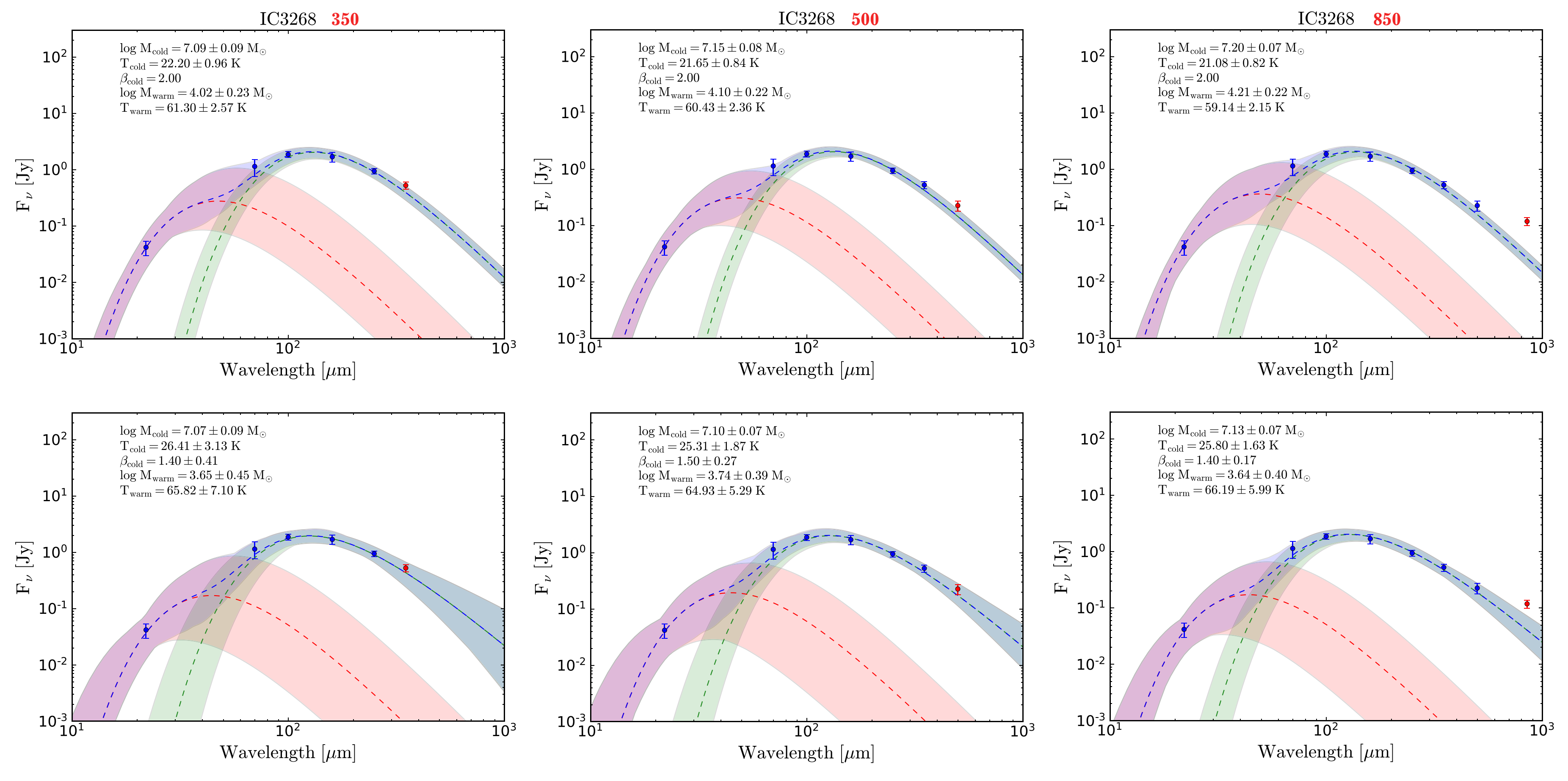

Investigating Cold Dust Properties of 12 Nearby Dwarf Irregular Galaxies by Hierarchical Bayesian Spectral Energy Distribution Fitting
Recently, the hierarchical Bayesian approach is introduced to fit the MBB model (Kelly et al. 2012; Juvela et al. 2013; Lamperti et al. 2019), which could reduce the degeneracy between T and β greatly, and so improve the SED fitting results. By applying a two-temperature modified blackbody (TMBB) model with a hierarchical Bayesian technique, we model the spectral energy distribution of 12 nearby dwarf irregular (dIrr) galaxies. We aim to probe potential submillimeter excess emission at 350, 500, and 850 μm and investigate the properties of cold dust parameters.

Figure 1. An example of global SEDs of IC 3268 obtained using the TMBB model (βw = 2 and βc = 2 or free) with the hierarchical Bayesian technique. The first line panels show the SED fits in the case of βc = 2 and the second line panels show the SED fits in the case of βc = free, from left to right, using the data ranging from 22–250 μm to predict 350 μm flux, from 22–350 μm to predict 500 μm flux and from 22–500 μm to predict 850 μm flux, respectively. The fitting result of the parameters is shown in the upper left corner of each panel. The warm component (with βw = 2) is overlaid in red and the cold component (with βc = 2 or free) is in green.
Article link:https://iopscience.iop.org/article/10.3847/1538-4357/abfe67
Contact: CHANG Zhengxue, ZHOU Jianjun
Xinjiang Astronomical Observatory, Chinese Academy of Sciences
Email: changzhengxue@xao.ac.cn zhoujj@xao.ac.cn
Attachment Download: